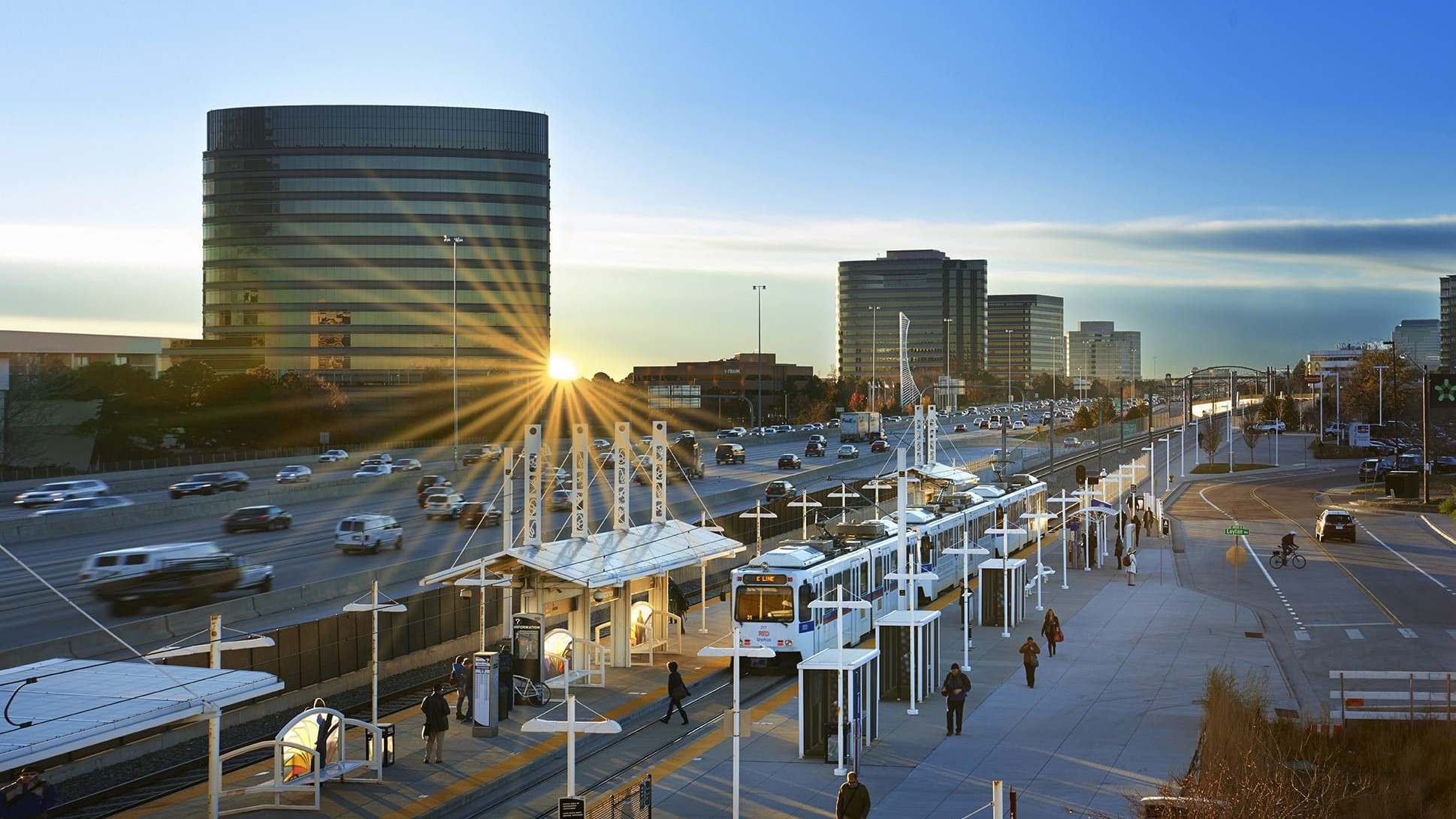It’s not that traffic congestion in the Denver south region is necessarily new, but anyone who’s been in the area for a while has seen it steadily become more and more of an issue. Nationally, analysts estimate that traffic congestion is collectively costing commuters hundreds of billions of dollars.
And it’s not just traffic — potholes, highways in need of repair and sprawling communities all add pressure on transportation needs in Denver south.
Add to that the fact that the State of Colorado is spending about half per on transportation per motorist that it did 25 years ago, according to the Proposition 110 website (also known as the Let’s Go Colorado initiative). It all adds up to one of the biggest challenges facing the Denver south region today.
But there’s good news — there are some very smart, dedicated people actively working on this problem and putting in place today innovative solutions that will pave the way (pun intended) for residents in Denver south to be moving around the region sans frustration and costly time wasted.
Here are some of the key ways Denver south’s biggest transportation challenges are being addressed:
Multimodal options
One of the best ways to ease traffic congestion? Less cars on the road.
One of the biggest aims of Proposition 110 is to fund more multimodal options, including in the Denver south region.
This might take the form of bigger and better bike lanes and paths, additional bus service to connect smaller communities with the larger region, and investment in emerging technologies all designed to have less cars clogging up I-25 at rush hour.
This will not only help to reduce your headaches around 4 p.m. every weekday but can have positive effects for air quality and overall health in the region.
Smart Cities Collaborative
The Denver South Economic Development Partnership (DSEDP) and the City of Centennial were recently selected to participate in Transportation for America’s (T4America) next cohort of their Smart Cities Collaborative.
Along with 21 other communities Centennial will be working at the forefront of innovative transportation technologies to find effective ways to utilize technology to help solve transportation challenges.
“Whether electric scooters, new bike-sharing systems, curbside delivery, or ride-sourcing services, the pace of innovation is accelerating, and these technologies and new mobility options are already on our streets and having a tangible impact in our communities,” said Russ Brooks, T4America’s Director of Smart Cities.
By working as part of a collaborative, Denver South EDP will have the opportunity to learn from what other communities are doing and vice versa. This will help to accelerate the process, which is welcome news to commuters in the area.
Whether autonomous vehicles that make commuting less of a frustrating experience, data collection methods that will help planners understand how to design and implement solutions custom tailored to Denver south’s needs.
Reinvesting in transportation
Remember 1991?
Some of the most popular movies were Terminator 2: Judgement Day and Robin Hood: Prince of Thieves, a gallon of gas cost just over a dollar and Guns N’ Roses were still topping the charts.
It was also the last time Colorado’s gas tax was updated.
This is the tax that funds much of the transportation spending in the state and in Denver south, and it’s been woefully underfunded for many, many years.
Suggested Reading:
But Denver south could stand to benefit if Proposition 110 is passed, which will update the gas tax to help the region and state get caught up on all things transportation.
For about a half cent per dollar, over $767 million in dedicated new revenue will be generated to help address the estimated $9 billion backlog in Colorado’s transportation infrastructure. This means fixing roads and highways, addressing local transportation issues on both a country and city basis, and investing in public and alternate forms of transportation.
With an eye on the long-term, initiatives like this will help Coloradans in real, meaningful ways that can have a direct impact on how long they’re stuck sitting in traffic and whether they have a reliable way to simply get to work or the bank or the doctor.
Denver south is a desirable place to be, and the transportation challenges in the region reflect that. The work being today might have an impact on communities in the region that we’ll see 10, 20 or 30 years from now. And we’ll likely look back and have the innovative public and private leaders in the area to thank.
We’ll also still do that “how much gas was back in [year]” thing, because that never gets old.
Related posts:
· Let’s Go Colorado/Proposition 110 Q&A
· The technology that’s transforming transportation


